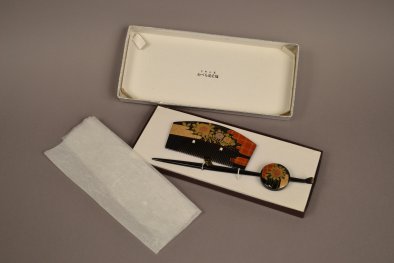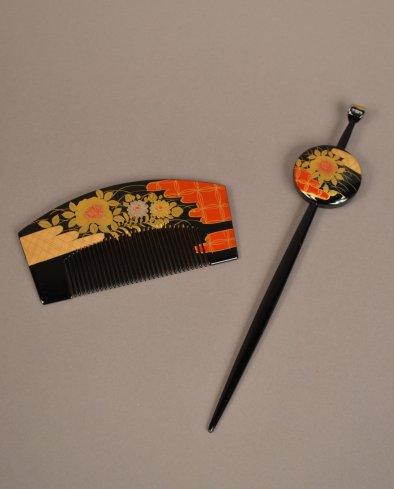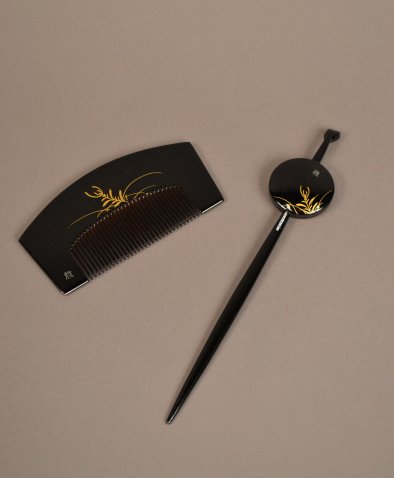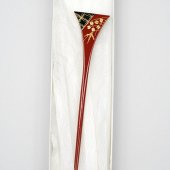Collections
What’s Here
- Accessories
- Beverages
- Ceremony
- Clothing
- Daruma
- Dolls
- Folk Toys & Games
- Food
- Hinamatsuri
- Household
- Masks
- Miss Kyoto
- Netsuke
- Samurai
- School
- Shoes
- Tools
Accessories
What is it?
Hairpin
What is it made of?
- Wood/Lacquer/Cardboard/Paper/Tissue paper
Where is it from?
Japan
When was it made?
Credit
Donated by the Juraku Company, 1983.



Description
This uchiwa, or flat handheld fan, is made of bamboo and paper. The uchiwa features a design by the artist Keisuke Serizawa of a fish, based on the Okinawan stencil technique called bingata. The fish is white with black lines against a bright blue background. The frame and handle are made of two sections of one piece of split bamboo. The ribs are laced together with thread, then covered with washi (handmade artisanal paper).
Uchiwa are traditional Japanese nonbending handheld fans, often elaborately decorated. Less formal than a sensu (folding fan), uchiwa are used to fan oneself in summer, to fan coals for cooking, or as an accessory to yukata (the summertime informal kimono).
Bingata (literally “red style”) is a traditional resist dyed and stenciled cloth from Okinawa. The practice dates from the Ryukyu Kingdom period (ca. 14th century), a time of great international trade in Okinawa; bingata is believed to be a synthesis of Indian, Chinese, and Japanese dyeing techniques. Bingata cloths usually feature natural subjects and bright colors.

